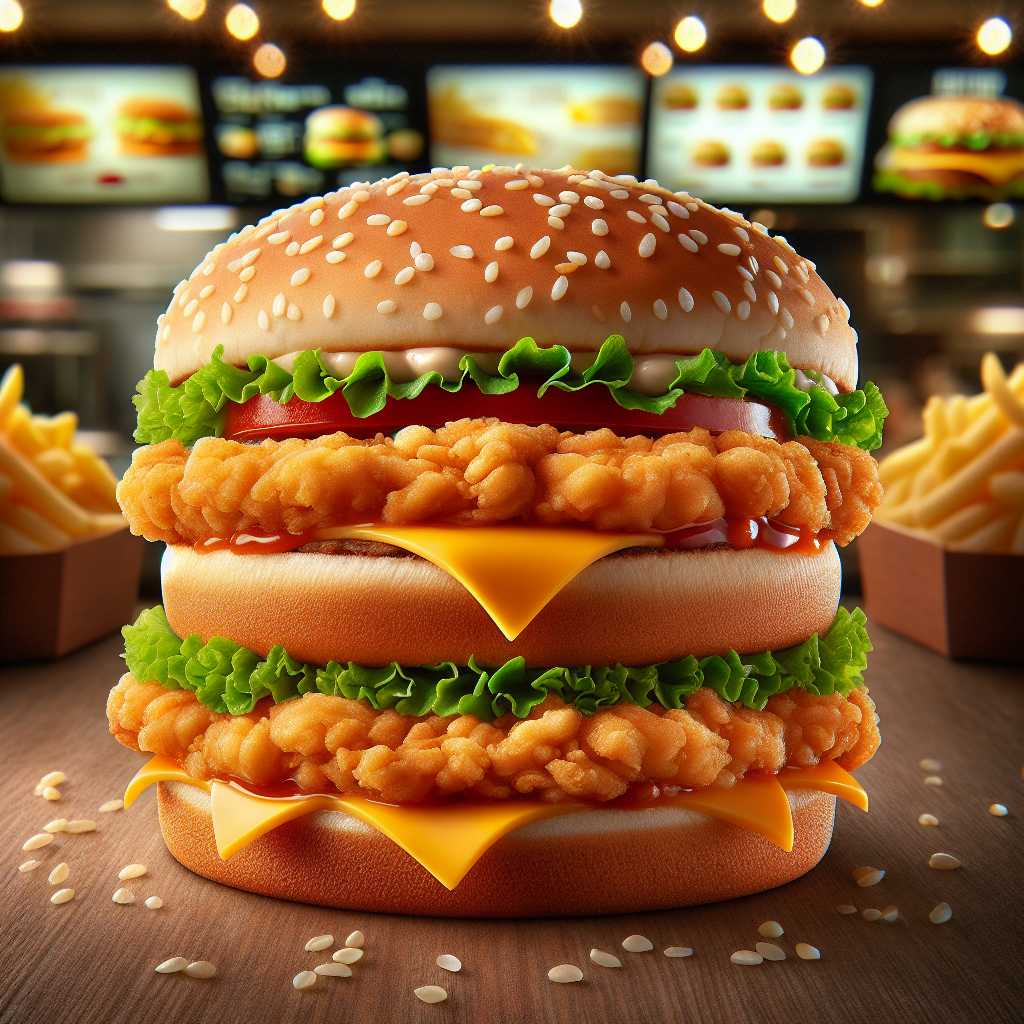The Chicken Big Mac: McDonald’s Twist on a Classic Burger
The Chicken Big Mac is McDonald’s innovative take on its widely renowned burger, tailored to meet a growing demand for poultry-based alternatives among the fast-food chain’s customers. Initially introduced as a limited-time item in select markets, this burger aims to provide the classic Big Mac experience with a unique chicken twist. The offering highlights the flexibility of McDonald’s menu and its commitment to catering to diverse consumer preferences. In this detailed exploration, we delve into the creation, reception, and potential impact of the Chicken Big Mac on McDonald’s lineup.
Development of the Chicken Big Mac
The development of the Chicken Big Mac can be viewed as a strategic move by McDonald’s to diversify its menu options while capitalizing on the iconic status of its original Big Mac. Keeping in step with the rise of chicken as a popular protein choice and consumer feedback requesting more variety, McDonald’s experimented with different formulations before settling on a recipe that closely mirrors that of its beef counterpart.
Upon entering the research and development phase, chefs and food scientists at McDonald’s were faced with balancing authenticity and innovation. A primary goal was ensuring that the flavor profile and overall eating experience stayed true to what patrons expect from a traditional Big Mac. This led to maintaining signature elements such as the special sauce, lettuce, cheese, pickles, and onions, served on a sesame seed bun.
Chicken patties became the highlight of this product, offering a different taste texture while aspiring to satisfy customers who are either preference or dietary influenced in their pivot away from red meat.
Global Rollout and Consumer Response
The introduction of the Chicken Big Mac followed a trend where it was released across various international markets as part of McDonald’s marketing strategy for region-specific demands. Notably, in the United Kingdom and Australia, the Chicken Big Mac successfully spurred interest alongside traditional offerings as a novelty item.
Consumer response has been closely monitored to gauge receptiveness towards this new entrant in the chicken sandwich market – an arena experiencing burgeoning competition from other fast-food giants. Social media played a siegal role in creating buzz around the Chicken Big Mac as influencers and consumers alike shared images and reviews of their culinary encounters with the sandwich.
Also of note has been customer feedback which has helped shape potential future iterations of the product. While some purists remain dedicated fans of the original beef-based Big Mac, others have welcomed the chicken variant as a refreshing twist on an old favorite.
Food Industry Context
The launch of this product doesn’t exist in a vacuum; rather, it reflects broader trends within the food industry. There’s been an observable shift toward chicken-based dishes among quick-service restaurants over recent years, capturing an increasing share of market leverage in response to evolving consumer tastes.
Several factors have contributed to this shift, including rising beef prices, health-related choices leading diners towards perceived leaner meats such as chicken, and innovational efforts in poultry-centric meal options upping the competitive ante.
In embracing these trends with products like the Chicken Big Mac, McDonald’s continues its dual stance on meeting current demand while also trying to set future culinary trends within its global customer base.
Future Considerations for McDonald’s Menu Strategy
The performance of limited-time offerings like the Chicken Big Mac informs McDonald’s long-term menu strategy. Depending on various economic indicators—such as sales data, customer satisfaction ratings, and supply chain considerations—the fast-food giant may decide whether products like this should enter regular rotation or undergo modifications.
Market metrics from these pilot rollouts could lead to insights on consumer loyalty and branching into regional flavors or diet-specific versions—such as Halal or mindful eating patterns—that align with contemporary food consumption narratives.
Alongside these considerations come discussions about quality perceptions versus cost-efficiency—a balancing act governing most operational dynamics within fast-food restaurant management—and evaluating overall brand impact with each menu adjustment.
